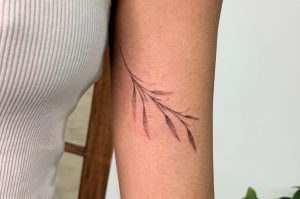A local group finds about 4,000 birds a year on sidewalks and streets in just one square city mile. More than half of these birds are dead but many are just stunned according to the group, whose 70 volunteers monitor the east end of Randolph Street from the river to Congress Parkway.
“Tens of thousands (of birds) are killed or injured as they pass through the city,” said Annette Prince of Chicago Bird Collision Monitors, a non-profit that has tracked and rescued birds since 2003. There is a “huge variety,” she said, about 120 species including neo-tropical birds, yellow rails, warblers and humming birds.
Finding so many dead birds downtown inspired Mayor Richard M. Daley to create a Bird Agenda in 2006, said Sarah Beazley of the Chicago Department of Environment at an April 8 discussion. Besides the bird monitoring group run by the Chicago Audubon Society, the mayor’s agenda involves the Field Museum, Chicago Park District and area forest preserves.
“The Bird Agenda sets priorities for making the city more bird-friendly,” Beazley said. “Birds are a huge part of the web of life and for some, this is their only connection with nature, and we want to do all we can to protect them.”
About 40 percent, or 1,500, of the birds found each year are still alive and most just need time to recuperate, Prince said. Volunteers net the stunned and injured birds and bring them to a wildlife rehabilitation center. The birds are treated and released into proper natural environments.
“We’re out there in a foot race with the predators,” Prince said. “Crows and gulls and rats and cats go after these stunned and injured birds.”
The city’s bird priorities are to reduce hazards, create habitats, manage nuisance species such as starlings, seagulls and pigeons and protect “priority habitat areas” along the lake and in other natural areas, Beazley said.
Nuisance birds are non-native species that take over spaces of native birds, whose numbers are declining, Prince said. They also damage human structures and carry diseases, she said.
Migrating birds get confused by building lights and fly circles around them until exhausted. On several busy migration nights, bird monitors saw hundreds of birds literally fall out of the sky and die near several high rise buildings.
To address this problem, Chicago was the first city to create a Lights Out program for buildings of 40 stories or more and those along the lakefront. From mid-March to mid-June and mid-August to mid-November, building owners and managers are asked to dim exterior lights after 11 p.m. during the nearly five months of heavy migration.
“Lights Out program is saving thousands of birds,” Prince said. “We are no longer finding a thousand birds a day so lights out is working.”
The city encourages building owners and managers to make buildings more bird-friendly, Beazley said. For instance, reducing reflectivity with window treatments and landscaping can make buildings more visible to birds. Temporary paint, decals, static clings and shades are used on some buildings to help birds see and avoid them.
Architects are also working with the city to design bird-safe buildings and these elements may be incorporated into the city’s green building guidelines. Adding elements that shade windows, for example, can also save energy and be more sustainable, thus serving multiple purposes.
“Architects are the number one killers of birds,” said Jeanne Gang of Studio Gang Architects. But bird-safe designs can be sustainable and aesthetically interesting, she said. For example,
Gang designed the undulating Aqua Tower being built in Lakeshore East between Randolph Street and Wacker Drive near the Chicago River and Lake Michigan, where the bird monitors work.
Many strategies can be used to protect birds, Gang said, including various glass treatments, shades, awnings or netting. Glass and other building materials can also be angled and placed in different shapes to provide great views for the people inside while also being visible to birds.
“Adding ‘visual noise’ with angles and sharp edges yield fewer bird strikes than a completely smooth building,” Gang said. Netting or sheer curtains put up during migration periods protect birds without adding visual noise, she said.
Gang tests out bird-friendly strategies in her projects, which include her award-winning design for the Ford Calumet Environmental Center and improvements to the ponds surrounding Lincoln Park Zoo. Gang said she aims to improve quality of life in the city for humans and wildlife.
Besides being a connection to nature for many city dwellers, birds control populations of insects and other pests and pollinate flowers. More than 300 bird species call Chicago home for some or all of the year, according to the Department of Environment, and about 8 million birds migrate through the city each year.
“I think of these birds as tourists and we want them to pass safely through the city,” Prince said. “They are an asset to the city and the variety of birds is unique here.”
Categories:
Eco & Environment Public
Tags:
audubon birds






Be First to Comment